#Soviet Strike
Explore tagged Tumblr posts
Photo




SEGA Saturn Magazine #11, Sept '96 - Showcase of 'Soviet Strike' on the SEGA Saturn.
18 notes
·
View notes
Text

#ps1#mortal kombat#mortal kombat trilogy#doom#final doom#tecmo superbowl#nfl full contact#soviet strike
27 notes
·
View notes
Photo

Top 47K - Soviet Strike
Join the HG101 gang as they discuss and rank EA’s first PlayStation entry in the (Something) Strike series of helicopter games.
#Hardcore Gaming 101#Podcast#Top 47858 Games of All Time#Soviet Strike#Electronic Arts#EA#PlayStation#helicopter#shooting game#video games
4 notes
·
View notes
Text
I would like you to share something. Could you comment on your favorite missions in Strike series (Jungle, Urban, Desert, Soviet, Nuclear Strikes).
Well, for myself, my favorite is a third, desert level in Soviet Strike where you needed to send ally forces onto army of enemy striking your base. Some kind of tower defense from PSX era.
#gamedev#indiedev#indie#indiegamedev#questions#jungle strike#urban strike#desert strike#soviet strike#nuclear strike
1 note
·
View note
Text


My ocs, Sir and Ser, aka the eldritch malevolent policemen 😔
#art#my art#oc#original characters#basically Sir came into existence during Russian empire#when the table of ranks was in its full power#so he is really competetive and individualistic#and sneaky in his misconducts#Ser came to existence during USSR#he is a perfect soviet picture of a police fugure that gone wrong#but at least he is more determined to adapt to the world changing#because he really wants to be a part of the community (you know... communism)#because of the same reason he follows Sir around#at first Sir despised him#bc the last thing that you wanted during the table of ranks historical period is for someone to take the higher place than you in hierarchy#and Ser WAS “created” to replace Sir#but in the end they both became the remnants of the past#so they mutually grew on each other#i have like...a whole story segment about them psychologically torturing one of my protagonists#but I cant help myself and draw some silly arts with them when the mood strikes#tfsg
718 notes
·
View notes
Text
my student for some reason: sure the Nazis murdered 11,000,000 people in extermination camps, but the United States temporarily imprisoned 110,000 Japanese Americans, and at the end of the day, those are pretty similar
me: I guess?
#burning your hand on the stove and being completely consumed in flames are pretty similar too when you think about it#the persistence of the notion that the Nazis and the Western Powers aren't that different at the end of the day is...striking to me#I'm pretty sure you're wrong about that#I mean I know a lot of people like to indulge in this thinking#often to rehabilitate Nazis#but also often in the hopes of de-legitimizing the West#there was a thing circulating a while ago of a video the Soviets made of a German WWII vet who was fighting in decolonial wars#and they got him drunk and eventually he started repeating the old Party Line#and this is presented like it is the true nature of the Western Powers contra the Soviets#I really think you're wrong about that#now that we're getting into the Cold War we're getting into the 'you know at the end of the day Americans and Soviets pretty similar'#sort of in some ways but also no
13 notes
·
View notes
Text


Sydney, May 1st, 1978
#communism#socialism#marxism#leftism#communist#leftist#marxist#socialist#anti capitalism#dismantle capitalism#may day#working class#workers#workers power#workers rights#labor rights#unionise#labor unions#unions#strikes#unionize#marx#lenin#leninist#leninism#karl marx#vladimir lenin#soviet power
10 notes
·
View notes
Text

ready
#USSR#1990#military#Kantemirovskaya division#Kaluga region#Soviet Union#exercises#atomic bomb#nuclear strike#nuclear war#war#training
27 notes
·
View notes
Text
Ukraine is attempting to kill Putin
Ukraine is developing a missile capable of potentially killing Vladimir Putin. As the conflict enters its third year, Yehor Chernev, head of Ukraine’s NATO delegation, recently revealed that the Hrim-2 missile is nearly operational. Believe me, there will soon be concrete results that not only Ukraine but also the Russian Federation will see The Hrim-2 is a single-stage, solid-fuel ballistic…
#especially as Western countries continue to prohibit Ukraine from using their weapons to strike targets within Russia. Currently#head of Ukraine’s NATO delegation#located in eastern Ukraine#primarily aiming at ammunition depots and fuel storage sites.#Putin#recently revealed that the Hrim-2 missile is nearly operational. Believe me#solid-fuel ballistic missile capable of carrying a 500 kg warhead over a range of up to 500 km. This new weapon represents a significant tec#the Tochka—a relic from the Soviet era. The Dnipro-based company KB Pivdenne has been developing this missile for the past decade. Despite o#there will soon be concrete results that not only Ukraine but also the Russian Federation will see The Hrim-2 is a single-stage#Ukraine#Ukraine can strike Russian targets using drones#Ukraine is developing a missile capable of potentially killing Vladimir Putin. As the conflict enters its third year#Ukrainian engineers have managed to continue their work. Volodymyr Zelenskyy announced a successful initial test of the missile last August.#which has so far relied on its best available missile#Yehor Chernev
2 notes
·
View notes
Text
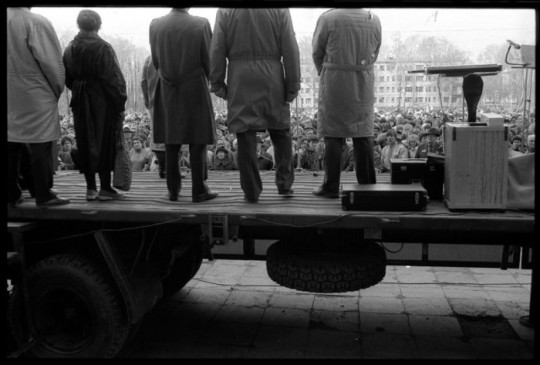
Vladimir Vorobyov, Miners strike Siberia 1991
15 notes
·
View notes
Text
I need to make more CH comics because they’re frequently interacting in this silly little head of mine…
#geisttalk#the baltic trio drawing came from a conversation I thought of them having while listening to 2000s emo songs for example#fun fact I have assigned three of the soviet siblings bands that I enjoy#latvia likes evanescence as previously mentioned#ukraine likes linkin park#and armenia likes soad god bless#also I gave russia a favorite band but it’s russian dad rock about afghanistan. каскад#still thinking about the genres the others would like#but belarus particularly strikes me as a zoya yaschenko enjoyer#rgap#< since I went off in the tags
2 notes
·
View notes
Text
#the way I see it Iran just realized that Israel is nothing like ukraine or Syria.#Iran thought they’d show Israel how much better that Iran had gotten militarily since 50 years ago#Iran thought they’d avenge on Israel for 6-days war scare the shit out of Israel#to never mess with Iran but they find out that Israel is light years beyond Iran#I’m probably the only one in this world who think there won’t be any escalation#because when israel strike it would be nothing left in iran to fight back#israel will fly nonestop sorties to eliminate any Iranian fighter jets and then hunt down mobile missile launchers and sites of drones#then Israel will completely decimate Iranian industries and infrastructures and send iran back about 3 decades#and israel won’t stop at retaliation#israel will keep striking iran because there’s no Soviet Union to supply iran with more weapons#and israel will get more support if China or North Korea tried to give military aid to iran#I’m not pro war but Iran had completely invited israel to attack iran unlike ever before#israel now has total justification to wage war with iran and not be held accountable for gaza#taiwantalk
3 notes
·
View notes
Text


good fucking night gang ♥️ wish me luck on my amhis mock tomorrow. im gonna do so bad. i tried revising dates but idk a good way to do itttt i only remember alger hiss case when truman became president when the u2 crisis happened when the korean war started and ended... and orher foreign policy stuff like that. but also when to secure these rights was
i bet you the firsy question tomorrow will be abt the civil rights campaigns during each or both presidencies LOL kill me....... i know all the facts just not the daaaatessssssss😭😭😭😭😭😭😭😭😭😭😭
#txt#dont ask me when brown v board was passed. ill kill myself#sweatt v painter? im done for#i remember all the names of the cases just not when they happened Aagghhhggh#anyway#us presidents#murdoc#give me luck 🙏🙏🙏🙏#pray that there will be 3 questions on foreign policy#and that if there is a civil rights question its on truman. because im mosy confident with him#alrhough... well#im not that bad#like i said i just struggles with the dates...#i know when the soviet union first successfully tested an atomic bomb#and when china & north korea fell to communism#and when the chinese nationalist party fled and why#and which taiwanese islands china bombed#yeah... its the legal cases#the years they happened... they just dont stick#also precise detail on how many workers striked I DONT FUCKING KNOWWWWW#if i have to talk abt the taft hartley act im done for#give me a question on huac or something pleaseeeee ill take a bite out of the test paper ill be so happy. ill sweat like the pig but not fro#m the heat. from the happiness. the joy of getting to write abt the thing that interests me the mosy during trumans presidency. and that lit#tle bit into eisenhowers#before mccarthy died of alcoholism#ohhh he was voted worst senator... he was so unpopular... he made sooo many lists and baseless claims... so many people lost their jobs or w#ere deported#lives were ruined#'discuss how much the red scare impacted whatever the fuck during trumans presidency' <- give me a question like that and i will rejoice in#the exam hall
2 notes
·
View notes
Photo
I have very little personal interest in the hyper realistic war games, especially now that it's The Year of Our Lord 2024 and we have powerful computers accessible to basically anyone that can run computer games like Crusader Kings or Hearts of Iron or the ever popular smaller scale internal politics simulators.
But, I do sometimes stumble upon ones with well written per nation rules that'd make the Soviet Union genuinely fun to play, and would also take days upon days to play to the end, and have an intense desire to get my hands on a copy and make my family play it.
And the target audience probably is the same kinds of male friend groups who also do HOI4 multiplayer together and actually enjoy it, but also groups of autistic teenagers, or a single autistic teenager or young adult with a family or friend group she wishes to torture without torturing herself (because to us, Spreadsheets: The Game is usually actually fun, not torture).

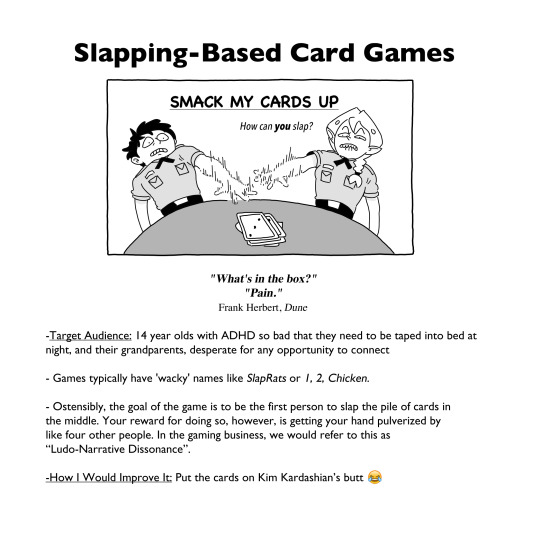
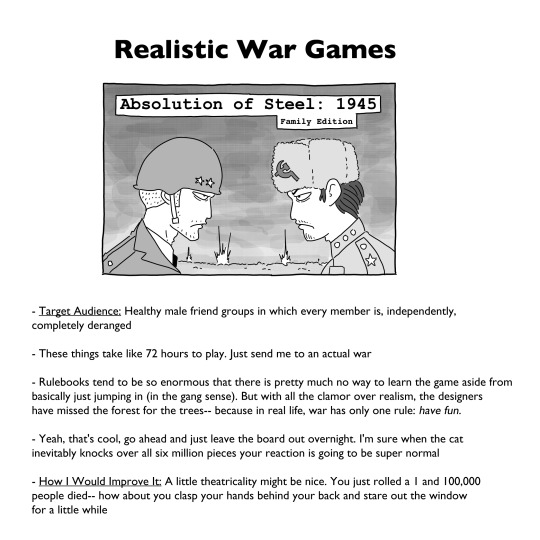
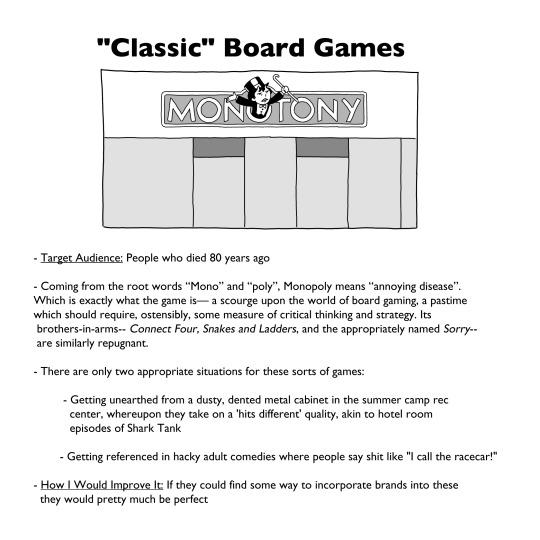

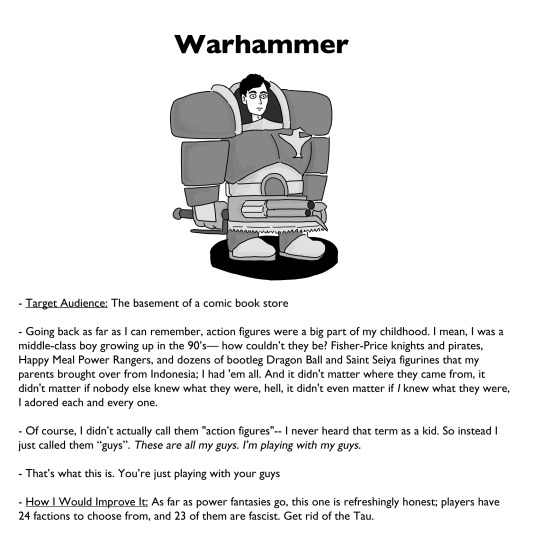
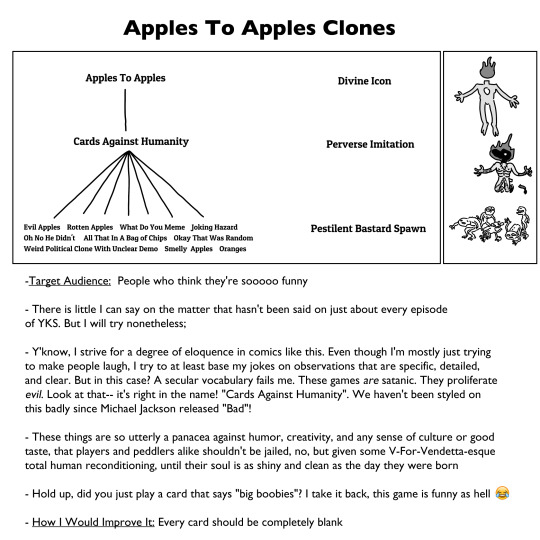


Guide To Board Games
#board games#not my usual content#but somehow still#tankieposting#commie posting#my pro soviet bias strikes again
10K notes
·
View notes
Text
"With Donald Trump set to take office after a fear-mongering campaign that reignited concerns about his desire to become a dictator, a reasonable question comes up: Can nonviolent struggle defeat a tyrant?
There are many great resources that answer this question, but the one that’s been on my mind lately is the Global Nonviolent Action Database, or GNAD, built by the Peace Studies department at Swarthmore College. Freely accessible to the public, this database — which launched under my direction in 2011 — contains over 1,400 cases of nonviolent struggle from over a hundred countries, with more cases continually being added by student researchers.
At quick glance, the database details at least 40 cases of dictators who were overthrown by the use of nonviolent struggle, dating back to 1920. These cases — which include some of the largest nations in the world, spanning Europe, Asia, Africa and Latin America — contradict the widespread assumption that a dictator can only be overcome by violence. What’s more, in each of these cases, the dictator had the desire to stay, and possessed violent means for defense. Ultimately, though, they just couldn’t overcome the power of mass nonviolent struggle.
In a number of countries, the dictator had been embedded for years at the time they were pushed out. Egypt’s Hosni Mubarak, for example, had ruled for over 29 years. In the 1990s, citizens usually whispered his name for fear of reprisal. Mubarak legalized a “state of emergency,” which meant censorship, expanded police powers and limits on the news media. Later, he “loosened” his rule, putting only 10 times as many police as the number of protesters at each demonstration.
The GNAD case study describes how Egyptians grew their democracy movement despite repression, and finally won in 2011. However, gaining a measure of freedom doesn’t guarantee keeping it. As Egypt has shown in the years since, continued vigilance is needed, as is pro-active campaigning to deepen the degree of freedom won.
Some countries repeated the feat of nonviolently deposing a ruler: In Chile, the people nonviolently threw out a dictator in 1931 and then deposed a new dictator in 1988. South Koreans also did it twice, once in 1960 and again in 1987. (They also just stopped their current president from seizing dictatorial powers, but that’s not yet in the database.)
In each case people had to act without knowing what the reprisals would be...
It’s striking that in many of the cases I looked at, the movement avoided merely symbolic marches and rallies and instead focused on tactics that impose a cost on the regime. As Donald Trump wrestles to bring the armed forces under his control, for example, I can imagine picketing army recruiting offices with signs, “Don’t join a dictator’s army.”
Another important takeaway: Occasional actions that simply protest a particular policy or egregious action aren’t enough. They may relieve an individual’s conscience for a moment, but, ultimately, episodic actions, even large ones, don’t assert enough power. Over and over, the Global Nonviolent Action Database shows that positive results come from a series of escalating, connected actions called a campaign...
-via Waging Nonviolence, January 8, 2025. Article continues below.
East Germany’s peaceful revolution
When East Germans began their revolt against the German Democratic Republic in 1988, they knew that their dictatorship of 43 years was backed by the Soviet Union, which might stage a deadly invasion. They nevertheless acted for freedom, which they gained and kept.
Researcher Hanna King tells us that East Germans began their successful campaign in January 1988 by taking a traditional annual memorial march and turning it into a full-scale demonstration for human rights and democracy. They followed up by taking advantage of a weekly prayer for peace at a church in Leipzig to organize rallies and protests. Lutheran pastors helped protect the organizers from retaliation and groups in other cities began to stage their own “Monday night demonstrations.”
The few hundred initial protesters quickly became 70,000, then 120,000, then 320,000, all participating in the weekly demonstrations. Organizers published a pamphlet outlining their vision for a unified German democracy and turned it into a petition. Prisoners of conscience began hunger strikes in solidarity.
By November 1988, a million people gathered in East Berlin, chanting, singing and waving banners calling for the dictatorship’s end. The government, hoping to ease the pressure, announced the opening of the border to West Germany. Citizens took sledgehammers to the hated Berlin Wall and broke it down. Political officials resigned to protest the continued rigidity of the ruling party and the party itself disintegrated. By March 1990 — a bit over two years after the campaign was launched — the first multi-party, democratic elections were held.
Students lead the way in Pakistan
In Pakistan, it was university students (rather than religious clerics) who launched the 1968-69 uprising that forced Ayub Khan out of office after his decade as a dictator. Case researcher Aileen Eisenberg tells us that the campaign later required multiple sectors of society to join together to achieve critical mass, especially workers.
It was the students, though, who took the initiative — and the initial risks. In 1968, they declared that the government’s declaration of a “decade of development” was a fraud, protesting nonviolently in major cities. They sang and marched to their own song called “The Decade of Sadness.”
Police opened fire on one of the demonstrations, killing several students. In reaction the movement expanded, in numbers and demands. Boycotts grew, with masses of people refusing to pay the bus and railway fares on the government-run transportation system. Industrial workers joined the movement and practiced encirclement of factories and mills. An escalation of government repression followed, including more killings.
As the campaign expanded from urban to rural parts of Pakistan, the movement’s songs and political theater thrived. Khan responded with more violence, which intensified the determination among a critical mass of Pakistanis that it was time for him to go.
After months of growing direct action met by repressive violence, the army decided its own reputation was being degraded by their orders from the president, and they demanded his resignation. He complied and an election was scheduled for 1970 — the first since Pakistan’s independence in 1947.
Why use nonviolent struggle?
The campaigns in East Germany and Pakistan are typical of all 40 cases in their lack of a pacifist ideology, although some individuals active in the movements had that foundation. What the cases do seem to have in common is that the organizers saw the strategic value of nonviolent action, since they were up against an opponent likely to use violent repression. Their commitment to nonviolence would then rally the masses to their side.
That encourages me. There’s hardly time in the U.S. during Trump’s regime to convert enough people to an ideological commitment to nonviolence, but there is time to persuade people of the strategic value of a nonviolent discipline.
It’s striking that in many of the cases I looked at, the movement avoided merely symbolic marches and rallies and instead focused on tactics that impose a cost on the regime. As Donald Trump wrestles to bring the armed forces under his control, for example, I can imagine picketing army recruiting offices with signs, “Don’t join a dictator’s army.”
Another important takeaway: Occasional actions that simply protest a particular policy or egregious action aren’t enough. They may relieve an individual’s conscience for a moment, but, ultimately, episodic actions, even large ones, don’t assert enough power. Over and over, the Global Nonviolent Action Database shows that positive results come from a series of escalating, connected actions called a campaign — the importance of which is also outlined in my book “How We Win.”
As research seminar students at Swarthmore continue to wade through history finding new cases, they are digging up details on struggles that go beyond democracy. The 1,400 already-published cases include campaigns for furthering environmental justice, racial and economic justice, and more. They are a resource for tactical ideas and strategy considerations, encouraging us to remember that even long-established dictators have been stopped by the power of nonviolent campaigns.
-via Waging Nonviolence, January 8, 2025.
#Chile#Egypt#Germany#Pakistan#Protests#United States#us politics#fuck trump#authoritarianism#revolution#nonviolence#nonviolent resistance#protest#america#protests#democracy#elections#trump administration#good news#hope#hopepunk#hope posting
4K notes
·
View notes
Text
مقدمات حرب الستة أيام بين مصر وإسرائيل - الطريق إلى النكسة
مقدمات حرب الستة أيام بين مصر وإسرائيل – الطريق إلى النكسة مقدمات حرب الستة أيام بين مصر وإسرائيل – الطريق إلى النكسة Preludes to the six-day war between Egypt and Israel – the road to setback الكاتب : بن عتو رضا الملخص: شكلت حرب 1967 بين مصر وإسرائيل حلقة هامة في تاريخ الصراع العربي الإسرائيلي حيث أحدثت تحولا جذريا في منطقة الشرق الأوسط بعد النتائج التي خلصت عليها هذه الحرب. إن المتتبع لتاريخ…
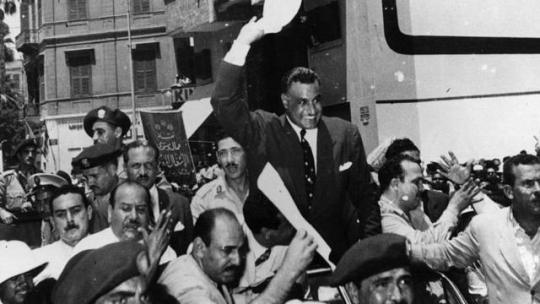
View On WordPress
#the air strike.#the Six Day War#the Soviet report#the Straits of Tiran#مضيق تيران#التقرير السوفييتي#الضربة الجوية. ; Gamal Abdel Nasser#جمال عبد الناصر#حرب الستة أيام
0 notes